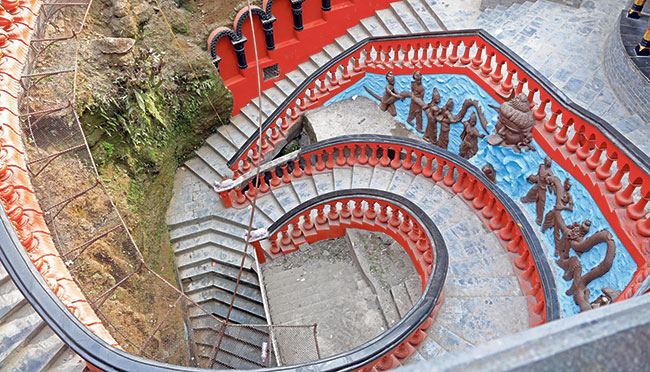POKHARA, Nov 11: Pokhara has become a top priority destination for common Nepali. Along with domestic tourists, international tourists are also making Pokhara their chosen destination. Eye-catching snowcapped mountains in the north, lakes and greenery are the prime reasons as to people being fascinated to be in Pokhara.
Besides observing the serene beauty of Pokhara, most visitors also head to the famous trek route of Annapurna Conservation Area. Tourists visiting for short time duration trek to the nearby Sarangkot area. They enjoy boating in the tranquility of lake and adore strolling by the lakeside during night.
Pokhara, apart from lakes and trek destinations, is also blessed with mind-blowing caves. Tourists are truly fascinated to observe the famous caves, including Mahendra Cave, Gupteshwor Cave, and Bats’ Cave. They are equally interested in visiting the smaller caves like Harihar Cave, Kumari Cave, which are currently in danger of extinction.
Mahendra Cave
This cave is a favorite destination for local and non-local tourists which are nestled in Pokhara Metropolitan City -16 Batuley Chaur. It is 125 meters long. It was founded by the locals back in 1951 AD. The old name of the cave is ‘Adhero Bhuwan.’ Senior culture expert Satya Mohan Joshi visited the cave in 1953 AD. He then penned an article for ‘Nepal’— a Newari newspaper, describing the cave. The then King Mahendra later read it. Eventually, he travelled to Pokhara and visited the cave. He preserved the cave in 1959 AD, resulting its name to Mahendra.
Five laborers die as soil mound caves in

“The flow of Indian tourists is comparably higher to that of domestic tourists during the prime season. Domestic tourists visit more through the off season,” said Shishir Poudel, manager of Mahendra and Bat’s Cave Management. He added, “Despite an appropriate season, the influx of domestic tourists is not exciting. Students visit on educational tours, especially during Dashain. But, the spark of this cave is gradually diminishing among students in recent years.
Now, electricity supply is added inside the cave. A local school, Bindhyabasini Higher Secondary School, has been preserving the cave for the past decade. The school has also spent 25 to 60 percent of earnings on the cave. “The earnings of the cave was Rs 16 million during the last fiscal year. About four hundred thousand domestic and international tourists visited the cave,” Poudel said.
He added, “We added foot track in the cave. Fish pond, swings for children and ticket counter were also installed from the earning.”
 Gupteswar Cave
Gupteswar Cave
Located close to Davis Falls in Pokhara Metropolitan City-17, Chorepatan, Gupteswar Cave is well known for religious tourism. The cave is divided into two sections. The first section of the cave is only 9,992 feet long. The second one is around a kilometer in length. However, humans are restricted to enter the second section.
There is a temple of Lord Shiva at the end of first section of the cave. Because of the narrow path, humans are restricted to go further.
President of Gupteshwar Cave Management Committee, Bishnu Poudel said, “This is one of the major tourist destinations for national and international religious tourists.” Locals claimed that influx of tourists in Mahendra Cave has decreased after the inauguration of Gupteshwar Cave.” Poudel claimed, “Though religious importance is the main attraction of the cave the place is equally famous for educational tour.”
However, construction of commercial buildings around cave premises has increased rapidly. Likewise, constant movement of heavy vehicles in the highway has made the cave more vulnerable. Tourism entrepreneurs inform that conservation of the cave is very important to promote the tourism of the cave.
According to Poudel 600,000 tourist visited the cave during the fiscal year 2074/75. The average annual income of the cave is around Rs 30,000,000. Different organizations are being operated by this revenue including Gupteshwar Multiple Campus and Gurukul Ashram.



































